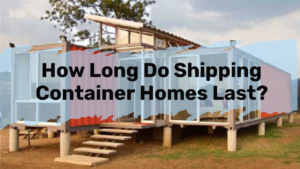Moving off-grid can be exciting, but it can also be stressful. In this article, we’ll discuss the 4 most popular off-grid living solutions that fit 99% of people out there. At Off Grid Dwellings, we are passionate about alternative home living and want you to have the information you need to decide the right type of housing and lifestyle for you.
Choosing the wrong structure to live in could have a negative impact that starts at your initial transition period and affects your comfort, lifestyle, and maybe even relationships. Further, this will have financial implications if you need to make a change because your initial option didn’t meet your long term personal needs or requirements.
Yurts
Do-It-Yourself Yurt Kits have exploded in popularity over the years. Originating in Mongolia, yurt kits have slowly made their way around the world and into the hearts of many consumers all over. Let’s touch on a few of the details of yurt living below.


Pros of Choosing a Yurt:
- Lightweight & Easy to Transport: Just like the Mongolian lifestyle these DIY Yurt Kits are nomadic. They can be transported almost anywhere. Whether you are setting up a yurt home in your dream location hidden away off the grid or in your current backyard; transporting the pieces will be an easy task.
- Easy Setup: Most yurt kits are able to be set up within 1 day. Depending on the size and use, that could stretch up to three to five days. Basic tools and some help can speed up the job but are not required in many situations.
- Cost-Effective: Yurt kits are one of the cheapest options you will see on this list. A yurt spanning over 1200 sq. ft. will cost you less than $40,000 in most cases.
- Durable: Most yurt kits come with a 10-year warranty, can withstand the scorching sun, heavy rain, winds up to 70mph and even decent snowfall. So for the cost, they are very durable as long as you take care of them.
- Flexibility: The space inside a yurt can be used in multiple ways. The open floor space in a yurt gives you almost too many options. You will have the ability to set up your yurt to your exact desire.
Cons of Choosing a Yurt:
- State & County Zoning Requirements: While this can be answered with what will probably be multiple phone calls to your local office, sometimes a few hoops must be jumped through to ensure your new yurt structure is compliant with State and County regulations.
- Durability: While it seems confusing to have this listed as both a pro and con, the fact of the matter is that while yurts are very durable, they are probably the LEAST durable type of shelter that made this list. So if you are comparing the list of four that is why durability lands here, not really fair to yurts but on the spectrum it makes sense.
- The Great Outdoors: How can the great outdoors be a con, you ask. Well, that all depends on you. Yurt living will allow you to be in touch with nature a bit more than the others on the list. That means bugs, insects, rodents, maybe even bears depending on your location. So you might want to take that into consideration.



Dome Homes
Have you ever seen the movie Martian or better yet dreamed of visiting Tatooine in Star Wars?…. Okay maybe a reach, but Dome homes definitely have that look of “a galaxy far, far away.” All joking aside, the next option on our list is a new emerging market of fiberglass infused dome houses.
These actually gained popularity with organizations like the Red Cross for natural disaster clean up when homes were needed. These domes were used as a quick and durable shelter for those who had been forced from their existing living arrangements in the wake of a hurricane, flood, earthquake, etc.…


Pros of Choosing a Dome Home:
- Durability: The lifespan on these dome houses goes on for 50+ years. The unique material that makes up the structure allows your dome house to withstand heavy rain, heavy snow, and even earthquakes.
- Structural Strength: The amazing structural integrity of dome homes allows consumers to use their current surroundings to create an extra layer of insulation or just a more aesthetically pleasing look. Dome homes can be built into the side of hills or mountain sides, covering the dome home and using the surrounding soil to act as another layer of insulation as well as a flower garden or grasses of your natural habitat. We have seen lots of clever and beautiful dome home setups. Think a little bit of the Shire from The Hobbit, to give you another mental image.
- Fast Setup: With 2 people and basic power tools these domes can be set up within 3 hours from start to finish!
- Cost-Effective: While a bit more expensive than a small DIY Yurt Kit, most of these dome houses go for under $25,000. Some even creep under $20,000 if you catch it on sale!
Cons of Choosing a Dome Home:
-
Size: Most dome houses we have seen cap out at 20 feet in diameter. If you were to want anything bigger it would be more of a custom job and it would increase the price of the project a bit. But we have seen multiple units connected so that is an option.
-
Awkward Shape Of Dome Pieces: While the pieces to create this dome are light and durable, the shape of them is a bit odd. This makes it a bit harder for transport individually if you are being more nomadic and plan on moving the unit. It is not impossible but just makes for multiple trips or more planning.


Shipping Container Homes
Container homes seem to have become all the rage of late. The modern or industrial look of them has made them very popular. I am sure you have probably seen many pictures of homes made from shipping containers and the different styles. There are even a few TV series now on this whole concept. But let’s dive into this a bit so we can see what they are all about.


Pros of Choosing a Container Home:
- Rectangular Shape: This is the shape or design that most of us are accustomed to. So while thinking of going off-grid and potentially downsizing, it is generally easier for us to think of space use and design with shipping container homes.
- Stackable or Multiple Units: While the previous options we have mentioned can be connected with a small walkway or tunnel between them, container homes are used in a much more traditional style. Container homes can be connected or stacked upon one another to make a larger space if needed. As long as you follow the structural guidelines and engineering weight limits you can get quite creative.
- Cost-Effective: This seems to be a recurring theme throughout these first 3 products, but the fact of the matter is this housing option is very affordable. Especially if you are planning to downsize a bit and live in a single or double unit. The cost for something that size in comparison to a traditional stick-built house is night and day. Factor in that you can buy a container home mostly finished, all you have to do is form your base for the unit and set it in place and you are ready to go.
Cons of Choosing a Container Home:
- Exterior Noise: Because of the metal surround of a container home, you potentially will experience sound similar to having a tin roof. Insulation and drywall will dampen the sounds of your surroundings, but you will more than likely still notice the sound of Nature when she comes to visit. There are other options to help with that so I would not think of this as a major concern.
- Rust from the Elements: Most container homes have rust protection on them, but that does not mean they are totally rustproof. Climate is a big determiner of how susceptible your unit will be to rust. The Cor-Ten steel that shipping containers are made of is resistant to rust but if you shelter your unit properly from the elements it will go a long way to prevent any structural rust from happening.


- Weight/Transportation: Obviously getting a full-size container (or multiple containers) to your final destination takes a bit more work than previous options listed above. Things like wide reliable roads and making sure there is enough space for your shipment to be delivered to your desired location. Other things you will need to think about is placing the container and getting it off the flatbed trailer. More than likely you will need some type of crane to pull the unit out of the container it arrived in and then set it properly on your already built foundation.
Tiny Homes
Tiny Homes like the above container homes have also become very popular lately. You have seen many TV series about people downsizing or moving into their mobile tiny home on wheels. It has a very nomadic feel and creates great potential for those who want to start living off-grid. Let’s get into a bit of the pros and cons of tiny homes below.



Pros for Choosing a Tiny Home:
-
Freedom of Movement: A tiny home is generally, but not always, built on a trailer. That makes moving your home very simple. Just hitch it up to your vehicle and you will have a change of scenery before you know it.
-
No Mortgage: This can also be said for the other options above. Tiny homes like most non-traditional homes don’t qualify for mortgage loans. So more often than not you will be paying cash for your tiny home and living in the free and clear. Believe me, that is a good feeling to have.
-
Cost-Effective: You can buy or build a tiny home for under $50,000. Now don’t get me wrong you could probably build one for significantly less than that if you did most or all of the construction yourself and if you were going bare bones. I have also seen tiny homes on the complete other end of the spectrum going for well over $150,000. Which makes no sense to me, kind of defeats the purpose. Overall I think you will find what you are looking for in that $50,000 +/- range.
- Easier Maintenance: Because a tiny home is a stick-built home the durability of it is great. You really are just taking your typical stick-built home and shrinking it down to a size you are comfortable with and that you feel comfortable being able to move if it’s on wheels. So that means you will be able to fix most problems you have and if you can’t most any other handyman can. It will hold up to the weather well with minimal extra protection or care. Smaller space means fewer places to clean or things to fix, thus more free time for your hobbies, family, & friends.
Cons for Choosing a Tiny Home:
- Smaller Living Space: This is the obvious one. We suggest you go and rent a tiny home for the weekend or find one on Airbnb. See if you like it and feel like you and the members of your household can co-exist in that size of a space.
- Loan Financing: The opposite of the above pro – about not having a mortgage is that not all people can pay cash for their tiny home. In such cases, getting financing for a tiny home can be a little more difficult. Some people can qualify for a personal loan, some may have to borrow from friends or family. There are options out there and if you get creative enough you can generally find one that fits you, but you may have to search a bit and be flexible.


- Zoning Codes & Regulations: Every community code is different and has their own unique language. That means what constitutes a tiny home, an RV, or a house can mean something entirely different depending on where you live. So before you jump in please do yourself a favor and find out what your City and County say about what is considered a legal tiny home. Remember, if your home is mobile, you will need to know the same info for other places you want to go to as well. The upside is these types of homes are becoming more popular so the definitions are becoming more clearly written for people to understand them, that means less confusion and less potential for disappointment in case of misinterpretation.
The Bottom Line
That concludes our list of the 4 main types of off-grid living options. We believe all four are great options and have their own unique pros and cons. Our suggestion to everyone is to always try them out before you choose the one that you think is right for you.
You can find most of these options in the form of vacation rentals or getaway homes to review and test the waters, so to speak. We wish you the best of luck in your off-grid adventure!




 The 20ft Upgraded Intergalacti…
The 20ft Upgraded Intergalacti…